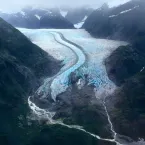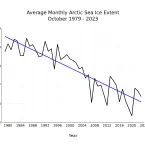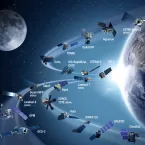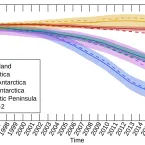Our Research
As climate changes, how do Earth's frozen areas affect our planet and impact society?
In this section
Related News & Stories
Filter by:

Spotlight
Several representatives from NSIDC will be attending the American Geophysical Union (AGU) Annual Meeting 2023 to share their expertise and connect with Earth Science experts. We've compiled a list of all sessions in which NSIDC staff are involved, including presentations, posters, workshops and other discussions.

Spotlight
Melting glaciers and ice sheets are already the biggest contributors to global sea level rise. Yet, of the approximately 200,000 glaciers in the world currently, no database exists to identify which glaciers have disappeared, and when. The Global Land Ice Measurements from Space (GLIMS) initiative, an international project designed to monitor the world's glaciers primarily using data from optical satellite instruments, aims to change that.

Analysis - Sea Ice Today
As the long Arctic winter sets in, sea ice extent has increased at a faster than average pace. By the end of October, the ice cover had reached the Siberian coast, while open water persisted along the coasts of the Beaufort and Chukchi Seas.

Spotlight
In 1993, NASA contracted the National Snow and Ice Data Center (NSIDC) at the University of Colorado Boulder to steward snow- and ice-related data, forming the NSIDC DAAC. The year 2023 marks 30 years that NSIDC has operated the NASA snow and ice DAAC.

Analysis - Ice Sheets Today
NSIDC has launched an upgraded and streamlined Ice Sheets Today website. The new site replaces the site previously known as Greenland Today and Antarctica Today. Ice Sheets Today offers easy access to melt statistics and scientific analysis of ice sheet conditions.

Spotlight
As NASA moves their Earth science data over to the Earthdata Cloud, a commercial cloud environment hosted in Amazon Web Services, the NASA Distributed Active Archive Centers (DAACs) are shoring up resources to help users adopt a cloud-based workflow as smoothly as possible. One such resource is the NASA Earthdata Cloud Cookbook, a learning-oriented resource to support scientific researchers who use NASA Earth data as NASA migrates data to the cloud.